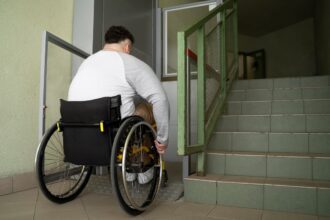Relocating to a new home can be overwhelming, especially for individuals with special needs. This transition requires careful planning, ensuring accessibility and accommodations are in place.
Understanding the Importance of Accessibility
Accessibility is crucial for individuals with disabilities, enabling them to navigate their living space safely and independently. Inaccessible environments can lead to feelings of isolation and frustration.
Assessing the Current Living Situation
Before moving, assess the current living situation to identify areas requiring adaptation. Consider the individual’s specific needs, such as mobility aids or medical equipment requirements.
Choosing an Accessible New Home
When selecting a new home, prioritize accessibility features, including:
- Wide doorways and corridors
- Ground-floor bedrooms and bathrooms
- Wheelchair-accessible showers and toilets
- Adaptable kitchen and storage spaces
Accommodating Medical Equipment and Supplies
Individuals with special needs often require medical equipment and supplies. Ensure the new home can accommodate these necessities, including:
- Oxygen tanks or ventilators
- Wheelchairs or mobility scooters
- Medication refrigeration units
- Hospital beds or specialized mattresses
Transportation Considerations
Transportation is a vital aspect of relocation. Arrange for accessible transportation options, such as:
- Wheelchair-accessible vehicles
- Medical transportation services
- Public transportation with disability accommodations
Hiring Specialized Movers
Engage with moving companies experienced in handling special needs relocations. They will ensure:
- Safe transport of medical equipment and supplies
- Trained staff to assist with mobility aids
- Careful handling of fragile or sensitive items
Packing and Labeling Essentials
Pack essential items, such as medication and medical equipment, separately and label them clearly. This ensures easy access during the relocation process.
Creating a Comfortable Living Environment
Upon arrival, prioritize creating a comfortable living environment by:
- Unpacking essential items first
- Arranging furniture to facilitate mobility and accessibility
- Installing necessary adaptations, such as grab bars or non-slip flooring
Building a Support Network
Relocation can be stressful. Build a support network of caregivers, healthcare professionals, and friends to provide emotional assistance during the transition.
Government Resources and Assistance
Familiarize yourself with government resources and assistance programs, offering financial aid and guidance for individuals with special needs relocating.
Moving with special needs requires meticulous planning, careful consideration of accessibility and accommodations, and a supportive network. By prioritizing these essential factors, individuals with special needs can transition smoothly into their new living environment.
By following this comprehensive checklist, individuals with special needs can ensure a successful relocation, prioritizing accessibility, accommodations, and comfort in their new living environment.
FAQs
Q: What are the most important accessibility features to consider when moving?
A: Wide doorways, ground-floor bedrooms and bathrooms, wheelchair-accessible showers and toilets, and adaptable kitchen and storage spaces.
Q: How can I ensure my medical equipment is safely transported during the move?
A: Hire specialized movers experienced in handling special needs relocations, and pack essential items separately and label them clearly.
Q: What government resources are available to assist with relocation costs?
A: Familiarize yourself with government programs offering financial aid and guidance for individuals with special needs relocating.
